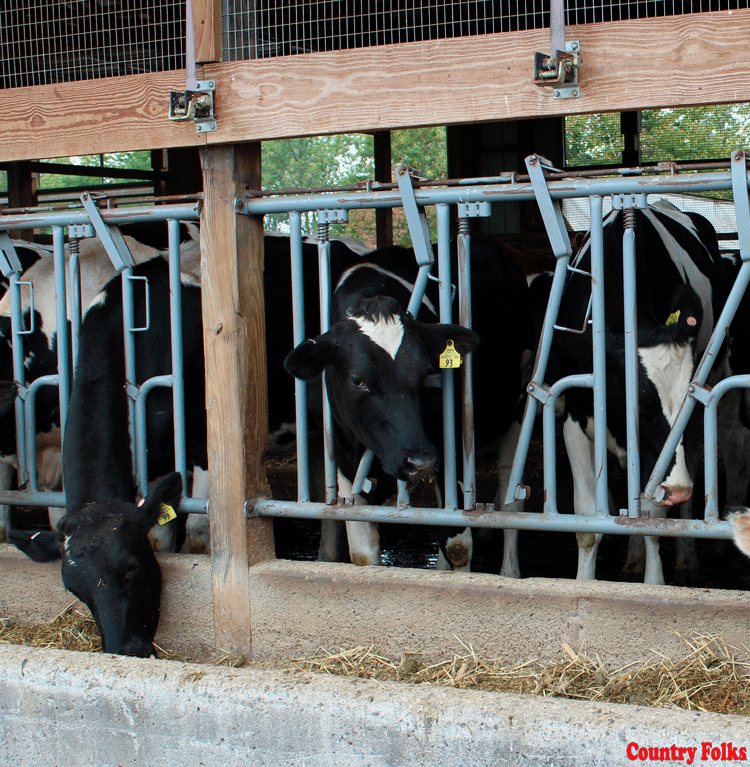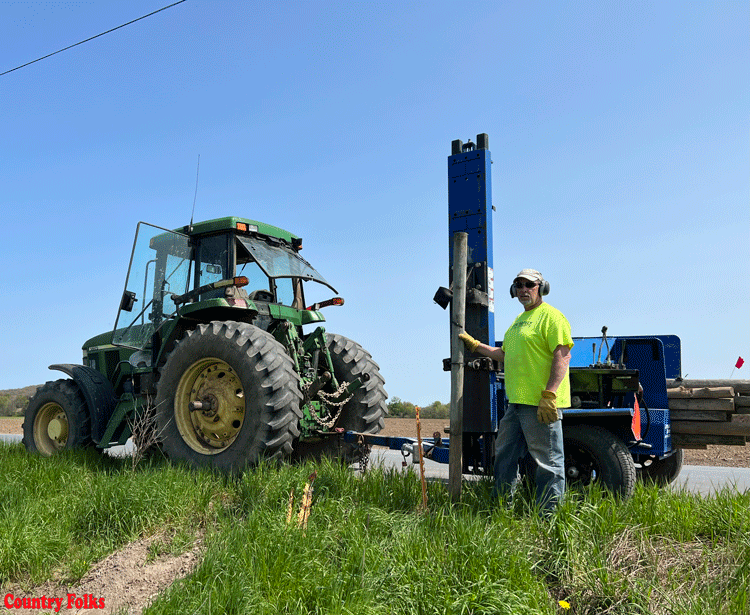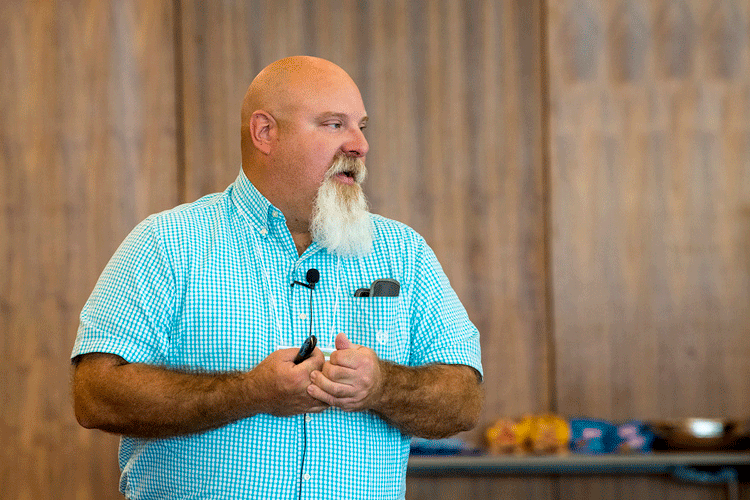by Katie Navarra
Recordkeeping enables seedstock beef producers evaluate which cows are most profitable for their operation and make important business decisions. It’s also critical for new USDA requirements.
In April 2019 the United States Department of Agriculture (USDA) announced that they will require cattle and bison to have an electronic tag. These tags use radio frequency identification (RFID) to rapidly capture and share information about cattle and bison. The Cornell Cooperative Extension Capital Area Agricultural and Horticultural Program co-hosted a workshop at Trowbridge Farms in Ghent, NY, to help producers prepare for upcoming changes.
According to the USDA Fact Sheet released announcing upcoming changes, animals that will require official, individual RFID tags include:
- Beef cattle and bison dairy cattle
- Sexually intact and 18 months or older
- All female dairy cattle
- Cattle used for rodeo or recreational events (regardless of age)
- All male dairy cattle born after March 11, 2013
- Animals used for shows or exhibitions.
The Fact Sheet states that tags should be applied at the time of birth or before the animal moves off the farm in interstate commerce.
“All tags are a 15-digit number. They all start with 840 because that is the USDA’s country code for the United States,” explained veterinarian Jane Lewis who works for the New York State Department of Agriculture and Markets.
The USDA has historically provided NYS Department of Agriculture and Markets (and other states) with metal ear tags that can be used as official identification in cattle. On Dec. 31, 2019 USDA will stop providing free metal tags, but will allow approved vendors to produce official metal tags for one additional year.
“NYSDAM distributes these metal tags at no charge to producers, veterinarians, livestock dealers and markets,” she said. “We intend to continue to provide metal tags through Dec. 31, 2020.”
By Jan. 1, 2021, the USDA will discontinue the approval of metal ear tags that bear their official seal. After that date only RFID tags may be used.
“Beef producers will have to purchase their own tags,” she said. “We are proposing to USDA that a certain number of coupons be made available based on beef populations in each state, but there is no guarantee.”
NYS Department of Agriculture does purchase a limited number of RFID tags for producers and veterinarians. The state-supplied tags are round buttons that cost $3 each. However, they are unreadable from a distance. Cattle must be brought within close proximity of the scanner for the data to be retrieved.
“If you purchase your own RFID tags you have more options for customizing the type of animal information collected,” she said.
Some producers prefer matching tags for a visual effect. This type of tag is available, stores different types of data and can be scanned at a greater distance. This style costs about $9 each. When purchased in large quantities, volume discounts are likely available.
Lewis has noticed an increasing number of producers purchasing scanners for their own use, especially those who bring cattle to shows. Scanners make it easier to capture the 15-digit identification number.
“Animals are unpredictable. When an animal moves or shakes their head you may only be six digits in and have to start over,” she said. “That is a lot to record manually.”
Handheld scanners start around $300. These models do not have a visual display, but transmit the data to the user’s cellphone, according to Lewis. Laser wands, range from $1,300 to $1,500. These have a longer range that can be read up to five feet away.
“These are helpful for cattle that are moving or not restrained,” she said.
Panel style readers like those at the livestock markets are powerful enough to read the tag as the cows move through cutes and alleys. It’s similar to the EZ Pass technology on roadways.
The dairy industry have been the ones who have used technology to know how much the cows are eating, when they are bred and what care they receive,” she said. “The beef industry could start using the tags to also track vaccinations, when the cow was bred and when things have happened. So it is really beneficial.”
The USDA tracks cattle so that animal health officials can track where diseases may be, which cattle may be at risk and where the cows have been and when. This is critical information during an infections outbreak. However, keeping records is beneficial for managing a profitable operation, according to Phil Trowbridge of Trowbridge Farms.
“Tracking the birthdate is becoming especially important when selling feeder cows,” he said. “You may not know their exact birthdate, but timeframe between the time the first calf and the last calf is born, especially when they are under 30 months of age is incredibly important.”
Record keeping doesn’t have to be fancy. In its simplest form, notes can be made on a wall calendar hanging in the barn. Trowbridge and his staff carry pocket diaries to record important information. Smartphone apps like the free notepad or calendar can also be used. For tech savvy producers, spreadsheets and specialized software are readily available.
“You can be as high tech as you want to be, but it can be intimidating for some people,” Trowbridge said. “If nothing else write on a calendar. Performance data helps you stay in business longer.”
Trowbridge recommends tracking birth, weaning and yearling weights to sort out the cows that are not as efficient. Knowing exactly which cow is raising a 600-pound calf versus a 400-pound calf enables producers to effectively cull herds.
“Since the cows are eating the same amount of feed and we’re encouraging people to keep the more profitable cow,” Trowbridge said.
It’s also important to track fertilizer costs, how often cattle are rotating through pastures and every aspect of the business. This helps in planning future year rotations based on weather and conditions.
“The more information we have the better we can all be at our jobs,” he said.












Leave A Comment